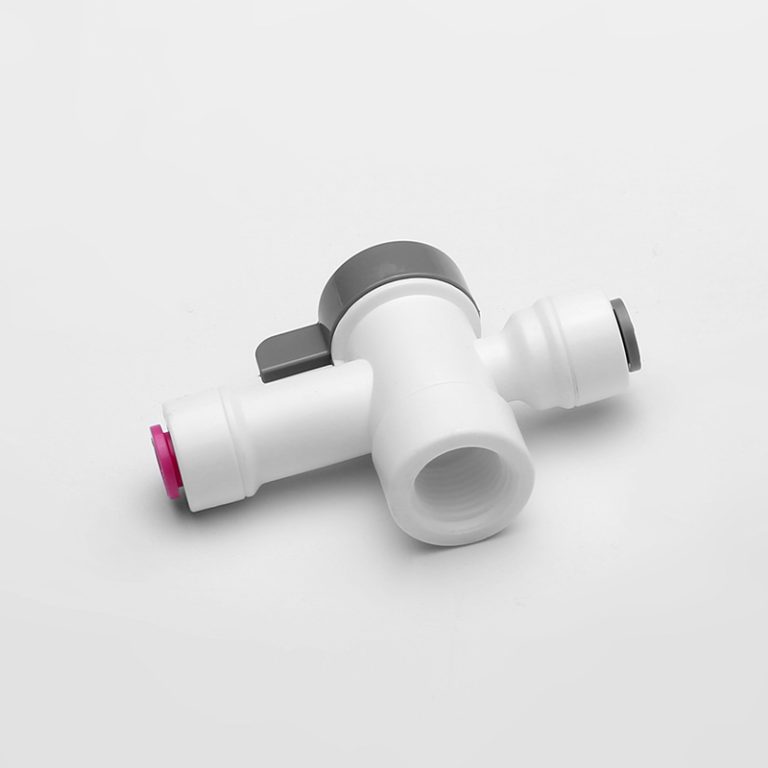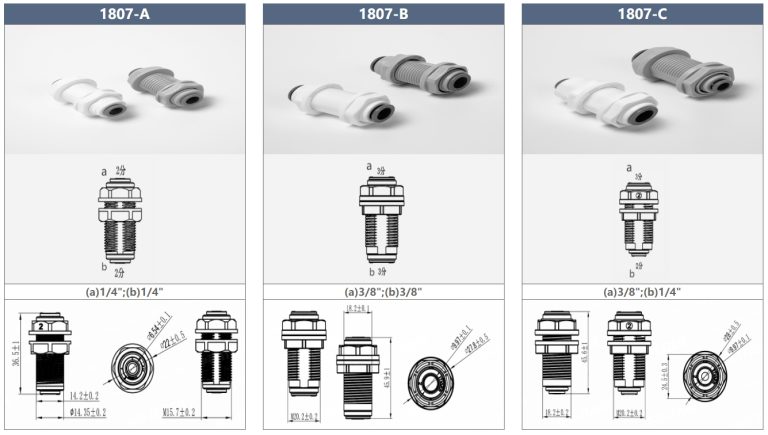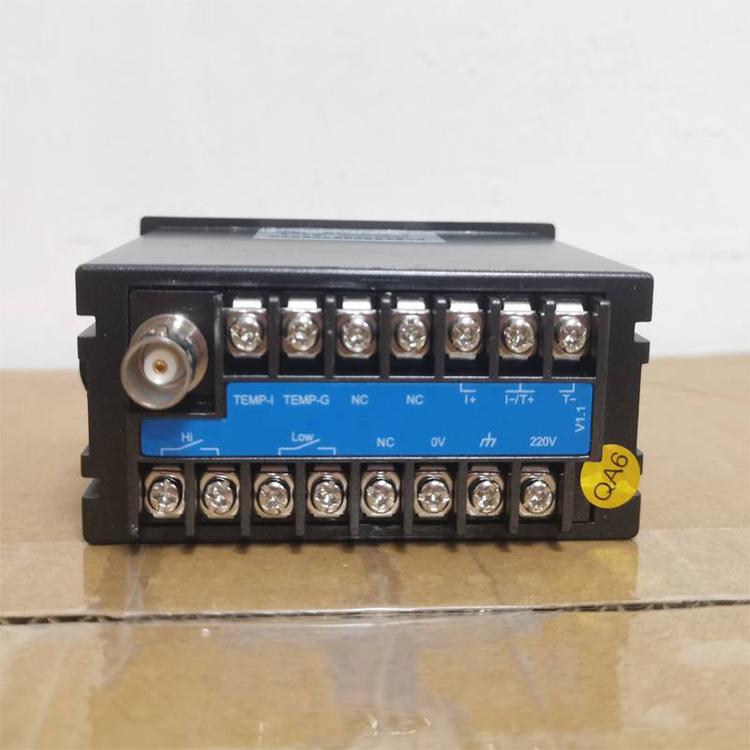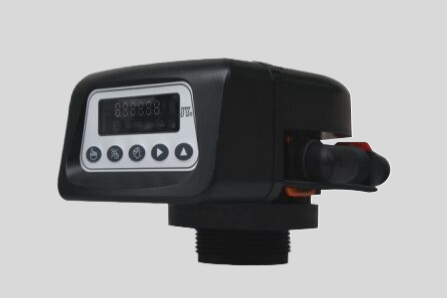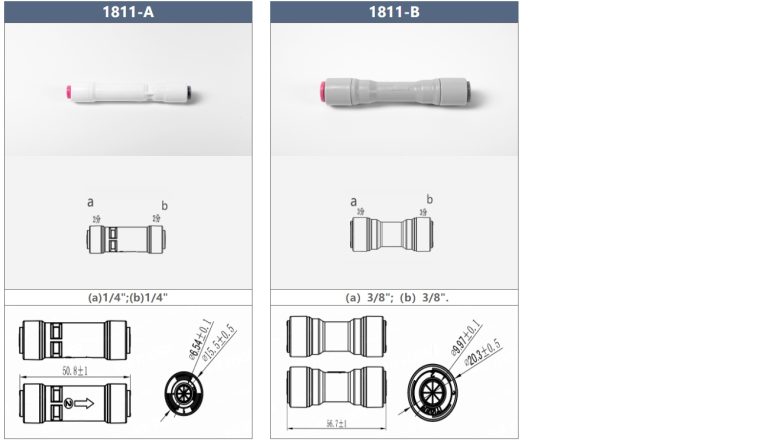Table of Contents
Benefits of Using Plastic Connectors for Hose Connections
Plastic connectors are a popular choice for hose connections due to their numerous benefits. These connectors are lightweight, durable, and cost-effective, making them a practical option for a wide range of applications. In this article, we will explore the advantages of using plastic connectors for hose connections and why they are a preferred choice for many industries.
| Model | Tube(a) | Stem(b) |
|---|---|---|
| 1801-A | 1/4 | 1/4 |
| 1801-C | 1/4 | 3/34 |
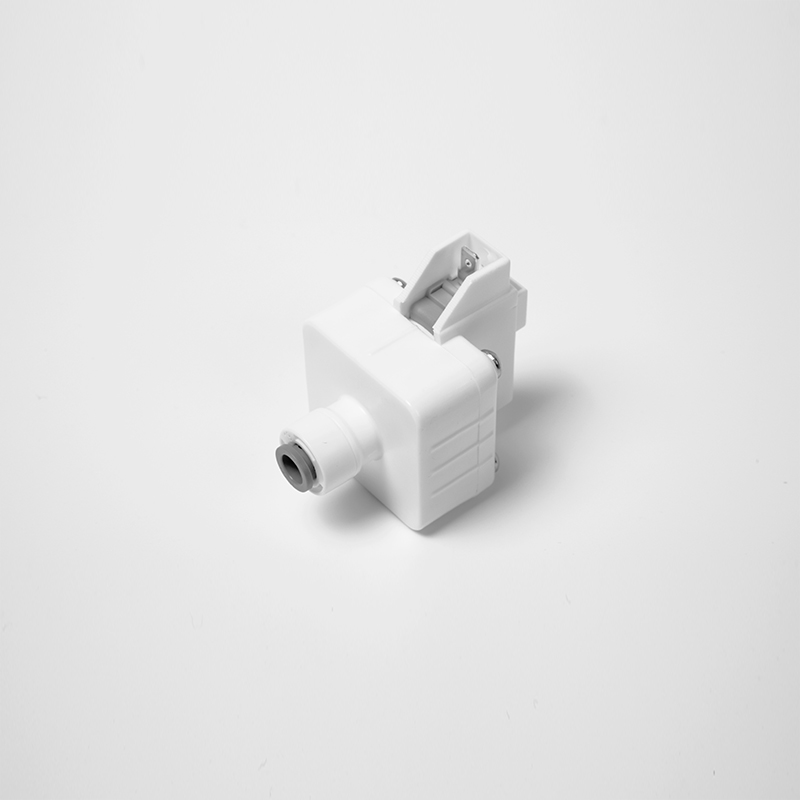
One of the key benefits of plastic connectors is their lightweight nature. Unlike metal connectors, plastic connectors are easy to handle and install, making them ideal for situations where weight is a concern. This lightweight design also makes plastic connectors more portable, allowing for easy transportation and storage.
In addition to being lightweight, plastic connectors are also highly durable. Many plastic connectors are made from high-quality materials that are resistant to corrosion, rust, and other forms of damage. This durability ensures that plastic connectors can withstand harsh environmental conditions and heavy use, making them a reliable choice for long-term use.
Another advantage of plastic connectors is their cost-effectiveness. Plastic connectors are typically more affordable than metal connectors, making them a budget-friendly option for businesses and individuals alike. This cost savings can add up over time, especially for those who require a large number of connectors for their operations.
Plastic connectors are also versatile, with a wide range of sizes and configurations available to suit different hose types and applications. Whether you need a simple straight connector or a more complex elbow connector, there is likely a plastic option that will meet your needs. This versatility makes plastic connectors a versatile choice for a variety of industries, from agriculture to manufacturing.
Furthermore, plastic connectors are easy to maintain and clean, requiring minimal upkeep to keep them in good working condition. This low maintenance requirement can save time and money in the long run, as there is no need for regular cleaning or lubrication to keep plastic connectors functioning properly.
Additionally, plastic connectors are often designed with user-friendly features, such as quick-connect mechanisms or ergonomic grips, that make them easy to use and install. This user-friendly design can help improve efficiency and productivity in various applications, as workers can quickly and easily connect hoses without the need for specialized tools or training.
Overall, the benefits of using plastic connectors for hose connections are clear. From their lightweight and durable design to their cost-effectiveness and versatility, plastic connectors offer a range of advantages that make them a preferred choice for many industries. Whether you are looking for a reliable connector for your garden hose or need a durable option for industrial applications, plastic connectors are a practical and efficient solution.
How to Properly Maintain and Extend the Lifespan of Plastic Hose Connectors
Plastic hose connectors are essential components in any garden or irrigation system. They allow for easy attachment and detachment of hoses, ensuring a secure and leak-free connection. However, like any other tool or equipment, plastic hose connectors require proper maintenance to ensure their longevity and optimal performance.
| Model | Tube(a) | Stem(b) |
|---|---|---|
| 1801-A | 1/4 | 1/4 |
| 1801-C | 1/4 | 3/16 |
One of the most common issues with plastic hose connectors is wear and tear. Over time, the plastic material can become brittle and prone to cracking or breaking. To prevent this, it is important to regularly inspect your hose connectors for any signs of damage. Look for cracks, chips, or any other visible wear and tear. If you notice any damage, it is best to replace the connector immediately to prevent any leaks or malfunctions.
In addition to regular inspections, it is also important to clean your plastic hose connectors regularly. Dirt, debris, and other contaminants can build up in the connectors, leading to clogs and reduced water flow. To clean your connectors, simply disconnect them from the hose and rinse them thoroughly with water. You can also use a mild detergent or vinegar solution to remove any stubborn dirt or grime. Make sure to dry the connectors completely before reattaching them to the hose.

Another important aspect of maintaining plastic hose connectors is proper storage. When not in use, store your connectors in a cool, dry place away from direct sunlight. Exposure to extreme temperatures and UV rays can weaken the plastic material, leading to premature deterioration. Additionally, avoid storing your connectors near any sharp objects or heavy items that could potentially damage them.
To further extend the lifespan of your plastic hose connectors, consider investing in high-quality connectors made from durable materials. While plastic connectors are generally more affordable than metal ones, they are also more prone to wear and tear. Look for connectors made from reinforced plastic or other sturdy materials that can withstand frequent use and exposure to the elements.
When using your plastic hose connectors, handle them with care to avoid any unnecessary stress or strain. Avoid twisting or bending the connectors excessively, as this can weaken the plastic material and lead to cracks or leaks. Instead, gently attach and detach the connectors as needed, making sure to secure them properly to prevent any leaks or spills.
In conclusion, proper maintenance is key to extending the lifespan of your plastic hose connectors. Regular inspections, cleaning, and storage are essential to prevent damage and ensure optimal performance. By following these simple tips, you can enjoy leak-free and hassle-free watering for years to come. Remember, a little care goes a long way in preserving the functionality and longevity of your plastic hose connectors.

